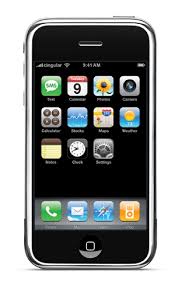Great article last week from Ars Technica postulating on one of the other major reasons why iPhone users are having problems with their network service and performance. Entitled "How smartphones are bogging down some wireless carriers," Chris Foresman hypothesizes that the real cause of the iPhone problems on the AT&T network can be traced to the way in which the iPhone pulls information in "short bursts" from the AT&T network for texting, web browsing, etc. According to Mr. Foresman's theory, it is this move among active and dormant state...which also helps to preserve battery life...that results in the widely recognized poor user experience that many iPhone users (especially in large cities) complain about.
As for what I think of this article, from a purely theoretical basis, I think it is a fun read. It draws on some interesting tidbits regarding the deployment of the iPhone globally and an interesting engineering-level perspective on how wireless networks operate. It also draws out some nice commentary regarding network design.
From a practical level however, I think that the proposed hypothesis is frankly, bogus. Blaming the atrocious experience that some iPhone users experience in cities like New York and San Francisco with the way in which the iPhone moves among active and dormant communication states on the AT&T network is not grounded in the reality of wireless networking. This opinion is centered on three main facts.
# 1...If the problem was this simple, it would have been fixed by now: If this network switch was the real cause of poor performance, don't we really think that AT&T or Apple would have made adjustments by now? Especially given the incredible pressure to improve user experience? Fact is, wireless carriers and their device suppliers spend an inordinate amount of time stressing over the balancing act of performance vs. battery life. If the powers-that-be could fix their performance issue with such a relatively simple fix, it seems to me that they would have done that already. Yes, it might impact batter life of the iPhone, but poor battery life is a whole lot better than poor service altogether.
# 2...Why aren't all iPhones (throughout the US) having this problem? By all accounts, the worst iPhone experiences are in the largest US cities like New York and San Francisco. iPhones in Tampa, Washington, D.C., and Poughkeepsie seemingly have no issues. Frankly, if Ars Technica has found the magic iPhone glitch, then one would assume that all iPhones everywhere would have the same bad experience. Since they don't, it must mean that there is some other cause.
# 3...But wait, what about O2's network in the UK? I am no expert in the O2 network, but the fact that their users in the UK (specifically London) are experiencing the worst service speaks most strongly to the fact that this is not an active / dormant state issue. In fact, this seems to prove the idea that there is combination of other impacts that are resulting in bad user experience. In particular, network capacity and management (combined with high numbers of users) resulting in network stress.
So, does that mean the switch among active and dormant state is not an issue at all? In fairness, there is probably some kernel of truth, but I would offer that it is probably one of the smallest impacts related to user experience. More likely, this is a classic case where the writers are making the mistake of concluding that correlation implies causation. Yes, it sounds a bit strange that AT&T and O2 would have similar issues...but it is highly doubtful that the iPhone's switch among active and dormant state would be the reason.
In fact, the more likely reasons for service problems with the iPhone can be gleaned from where the biggest complaints occur. After all, the common denominator with this problem is not the iPhone...but the use of the iPhone in a large city, with lots of users, challenging spectrum / coverage models, highly centralized user base, limited RF spectrum, and difficult economic considerations impacting network upgrades. These characteristics are all things that New York, San Francisco, and London share...and likely the cause of the poor experience for iPhone owners in these areas.








No comments:
Post a Comment